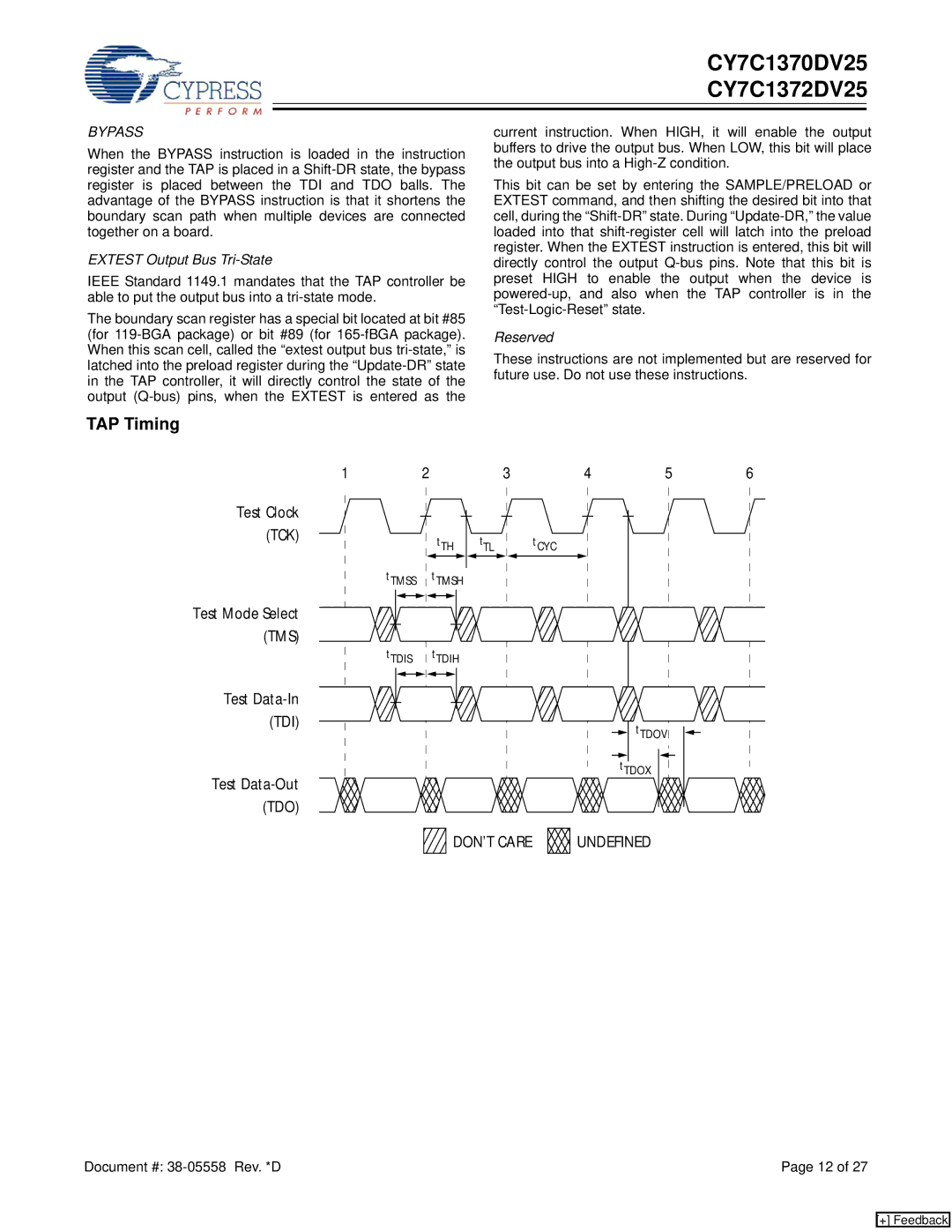
CY7C1370DV25
CY7C1372DV25
BYPASS
When the BYPASS instruction is loaded in the instruction register and the TAP is placed in a
EXTEST Output Bus Tri-State
IEEE Standard 1149.1 mandates that the TAP controller be able to put the output bus into a
The boundary scan register has a special bit located at bit #85 (for
current instruction. When HIGH, it will enable the output buffers to drive the output bus. When LOW, this bit will place the output bus into a
This bit can be set by entering the SAMPLE/PRELOAD or EXTEST command, and then shifting the desired bit into that cell, during the
Reserved
These instructions are not implemented but are reserved for future use. Do not use these instructions.
TAP Timing
1 2
Test Clock
(TCK)tTH
tTMSS tTMSH
Test Mode Select (TMS)
tTDIS tTDIH
Test
3 | 4 | 5 | 6 |
tTL tCYC
tTDOV
tTDOX
Test
DON’T CARE | UNDEFINED |
Document #: | Page 12 of 27 |
[+] Feedback
